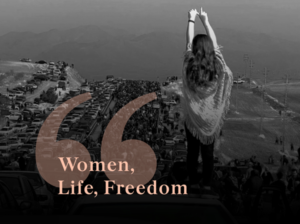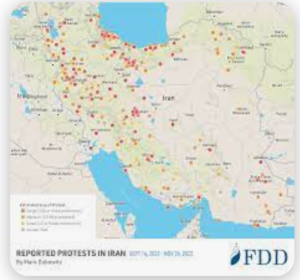Many young Iranians, including teenagers, detained over their participation in anti-government protests, are at risk of execution and have been tortured, Amnesty International reports.
The rights watchdog urged Tehran to overturn the death sentences against three demonstrators aged 18, 19 and 31, after court hearings that lasted less than an hour. Amnesty said the three men had been subjected to “beatings, floggings, electric shocks, suspension, death threats and sexual violence to extract “confessions”.”
 Widespread protests erupted in mid-September, following the death of Mahsa Amini, a 22-year-old Iranian-Kurdish woman, while she was in the custody of the so-called morality police.
Widespread protests erupted in mid-September, following the death of Mahsa Amini, a 22-year-old Iranian-Kurdish woman, while she was in the custody of the so-called morality police.
The latest demonstrations suggest an ideological and generational shift, as young people vow to replace theocracy with secular democracy, The FT’s Najmeh Bozorgmehr writes:
Mohsen Shahrnazdar, an anthropologist, says the values and goals of this movement construct an ideology based on “human dignity” and “individual and social freedoms”. Women’s rights were the catalyst but other issues, such as the rights of ethnic and religious minorities, have been absorbed.
Today, Iranians who have taken part in the demonstrations tell The New York Times— in their own words — why they are willing to brave such severe punishments to help bring about change.
 The Foundation for the Defense of Democracies has produced a map for policymakers, the media, and the American people to fully appreciate the scope and breadth of these protests. It contains information on the more than 2,300 documented protests in Iran since September 16, 2022.
The Foundation for the Defense of Democracies has produced a map for policymakers, the media, and the American people to fully appreciate the scope and breadth of these protests. It contains information on the more than 2,300 documented protests in Iran since September 16, 2022.
Map Instructions: Zoom in to reveal additional protests. Click on each data point to reveal information and link(s) to outside source(s).







